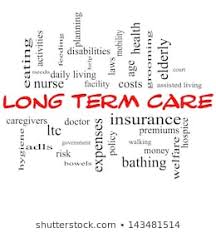LONG-TERM CARE HOMES GET MORE BEDS
MUSKOKA — Local long-term care homes have new powers to manage COVID-19.

Residents are prevented from leaving their homes to visit families.
The province says a new law will also free up more space in long-term care home by moving people out of hospitals who no longer need hospital care.
Ontario says it is taking further steps to ensure that health sector workers, including those that work in the long-term care sector of where and when they are needed.
On March 23, Ontario enacted a new order under the March 17 declaration of emergency to ensure personnel are properly deployed to keep staff, volunteers and residents in long-term care homes safe.
This temporary order gives long-term care homes the ability to free-up valuable staff, identify staffing priorities, and develop, modify and implement redeployment plans.
Measures include:
- Redeploying staff within different locations in (or between) facilities of the health service provider;
- Changing the assignment of work, including assigning non-bargaining unit employees or contractors to perform bargaining unit work;
- Changing the scheduling of work or shift assignments;
- Deferring or cancelling vacations, absences or other leaves, regardless of whether such vacations, absences or leaves are established by statute, regulation, agreement or otherwise;
- Employing extra part-time or temporary staff or contractors, including for the purpose of performing bargaining unit work;
- Using volunteers to perform work, including to perform bargaining unit work; and
- Providing appropriate training or education as needed to staff and volunteers to achieve the purposes of a redeployment plan.
Dr. David Williams, Ontario’s chief medical offficer of health, has also issued a new directive for long-term care homes under the Long-Term Care Homes Act, 2007 that restricts residents from leaving a home for short visits with family and friends.
He says it ensures residents do not inadvertently contract COVID-19 while out of the home and spread the virus upon their return.
Instead, residents who want to go outside will be able to remain on the home’s property and maintain safe social distancing from any family and friends who visit them.
Ontario is also increasing long-term care bed availability to ensure homes are able to provide isolation rooms when required, as well as providing long-term beds for people on the long-term care waitlist.
In particular, the province says patients in the hospital who no longer require hospital services will benefit from this increased long-term care bed capacity, and their placement into long-term care will also free up hospital beds to treat acute patients.
In addition, Ontario is making necessary adjustments to ensure both resident and families’ wishes are taken into account, and a sufficient number of staff are available to support long-term care home residents.
Updated procedures will bring further clarity around admitting, discharging, and readmitting long-term care home residents at a time when homes are trying their best to prevent the spread of COVID-19 among residents, staff and essential visitors.
Lastly, the province is ensuring sufficient nursing and personal support care staff are available to support long-term care home residents. All new nurses and personal support workers hired to help long-term care homes cope with COVID-19 will be screened to ensure they are qualified and present no risk to long-term care home residents.
Long-term care homes continue to restrict non-essential visits and actively screen essential visitors, staff, students, volunteers, residents moving into a long-term care home and residents returning to a long-term care home.
As of March 9, when long-term care homes submit samples for standard respiratory testing, they are also being tested for COVID-19 automatically to ensure the province identifies potentially unknown cases.
